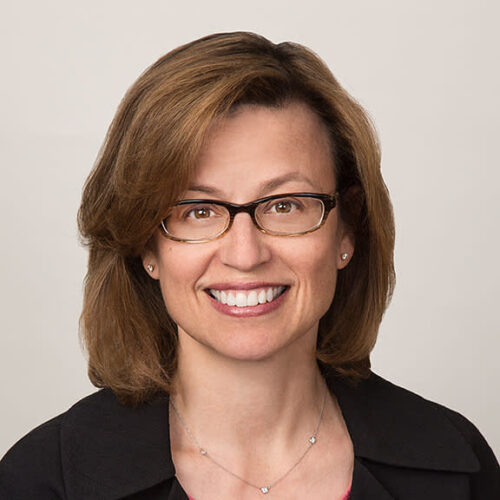
Between calling the effectiveness of the Main Studio Rule elimination into question and moving towards allowing FM geo-targeting, the FCC has kicked off a hot 2024 for broadcasters. Now the NAB is stating its case on those matters with the FCC’s newest Commissioner, Anna Gomez.
On February 13, representatives from the National Association of Broadcasters, including Erin Dozier and Larry Walke, engaged in discussions with staff members Deena Shetler and Harsha Mudaliar from Commissioner Anna Gomez’s office.
Among the topics discussed was a recent Notice of Proposed Rulemaking, which would provide expedited process review for stations that offer at least three hours of locally originated programming weekly. The FCC is seeking input on defining “locally originated programming” and what constitutes a “local market,” suggesting activities within the market such as scripting, recording, or editing could qualify.
The NPRM also questioned a 2017 rule change, enacted under former Chair Ajit Pai, which removed the requirement for AM and FM stations to have a staffed physical studio within their service community, a move that was largely welcomed by major radio groups and the NAB for its cost-saving benefits.
During the meeting with Commissioner Gomez’s representatives, the NAB underscored the intrinsic value of localism in broadcasting but argued that financial constraints pose a significant barrier to the production of local content and that only adjusting application processing incentives would not overcome the fundamental challenges stations face in producing or expanding local programming.
Broadcasters have until March 11 to submit comments, with an additional 30 days for reply comments, under MB Docket No. 24-14.
The meeting with the representatives for Anna Gomez also touched on the proposal allowing FM boosters to originate programming for geo-targeting within specific market zones. Despite the proposal’s advancement, the NAB reiterated widespread industry opposition due to technical, financial, and competitive concerns.
They stressed that a significant portion of the broadcasting sector, including diverse ownership groups, remains firmly against the rule change.
Lastly, the conversation also covered the FCC’s draft Order on Reconsideration concerning rules, which had previously limited the duplication of programming across commonly owned or brokered stations within the same service area to 25% of the average broadcast week. This rule was abolished in August 2020 but faced reconsideration due to a petition from groups concerned about FM broadcasting’s impact on record labels and low-power FM radio services.
Given the considerable time elapsed since the petition and the absence of new evidence to support a reversal, the NAB believes the FCC should reevaluate the situation based on recent market developments before reinstating the rule.







First and foremost: YES, ABSOLUTELY bring back the local studio requirement. In fact, let’s just erase EVERYTHING Ajit Pai did and make it illegal to do any of it ever again. That little twerp of a corporate agent never should have been on the commission at all, let alone been its chair.
Secondly, this FM geofencing idea is an… *interesting* concept, but from the, practical, technical, and financial sides, it’s not really feasible.
To start with, we’re talking about basically “cellularizing” FM broadcast signals, which means you need multiple transmitters on multiple masts in multiple locations across a market. So you’re actually ADDING costs: the extra real estate, the extra utilities, and the extra equipment. And that’s IF you can even FIND appropriate transmitter sites, because you can’t just plop a transmitter down anywhere no matter what the power or directionality is, you have to follow spacing and signal strength rules, and, since this will all be on the same frequency, geosyncronization and phasing math. So you’re going to face the GUARANTEED problem of weaker signals and even outright gaps in coverage in the middle of your market, because you won’t be able to find ideal locations even if you have the money to spend on them.
On top of that, even if you DO manage to properly cover the entire market in cells that way, you can’t just plop a few transmitters around an area on the same frequency and expect them to play nicely with each other, even if they’re carrying the exact same audio. The signals have to be precisely timed according to the distance from the next closest radiators, and that means both the audio AND the RF must be syncronized, otherwise each transmitter’s signal will wreak havoc on all of the others around it. If you have DIFFERENT audio signals on the same frequency, then it all falls apart. We’ve all heard the FM capture effect before in areas between two DISTANT stations on the same frequency. It’s one station or the other, never both at the same time, and there’s a sizable zone where your radio will quickly flicker back and forth between the two, making it entirely unlistenable.
Now, presumably, if these are lower-powered transmitters on the same frequency and are geosyncronized, even with separate audio signals, that zone is going to be smaller, but it WILL still exist. That’s just a matter of FM technology, that’s not going to change. Even if you did this digitally via “HD Radio,” the effect would still be there, because it’s data over FM, it’s just how frequency modulation works. Which is actually a good thing, because if it were amplitude modulation, it would be even MORE of a mess (there is no capture effect on AM).
So this concept is intriguing from a “this is how it could be done” point of view, but it’s just not financially viable, because there’s no extra ad income to justify the extra overhead. You’re not going to make any MORE money, you’re only going to be able to split up the existing full-market price of ad time among the individual smaller signals. You won’t even be breaking even, you’ll actually be LOSING money. Sure, if it’s passed, SOMEONE might try it here and there, but it’s not going to become a regular thing.